
I’ve always loved the original K-body 1976-79 Seville. It always reminded me of an American version of the Judge Smails-era Rolls Silver Shadow. Clean lines, tasteful application of chrome, vast interior and exterior color availability. I can go on, but I’ve waxed extensively on these cars before.

But yesterday I spied this Elegante on the electronic bay and was smitten. The 1978-79 Seville Elegante was even Broughamier than the standard Seville, despite it already being the priciest Cadillac, except for the Cadillac limousines. It was only available in two color combinations. The black over silver is nice and much more commonly seen, but my favorite is this car’s combo.
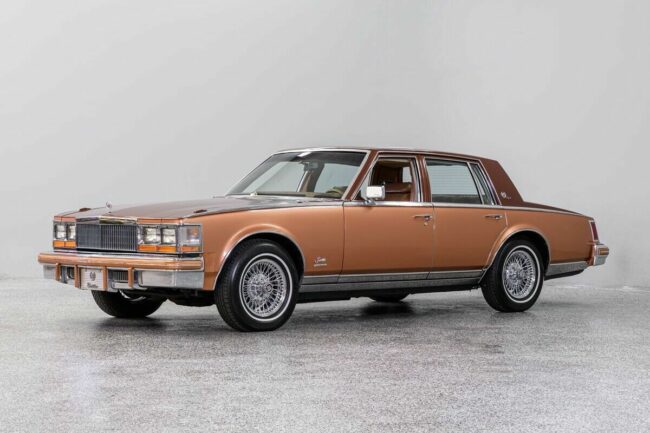
And a very ’70s color combo at that, Ruidoso Brown over Western Saddle Firemist. Key features over the standard Seville was the two tone paint with molding, genuine wire wheels (also available as a standalone option), perforated leather seating with ultrasuede accents and center console, and a leather-wrapped steering wheel, among other refinements.
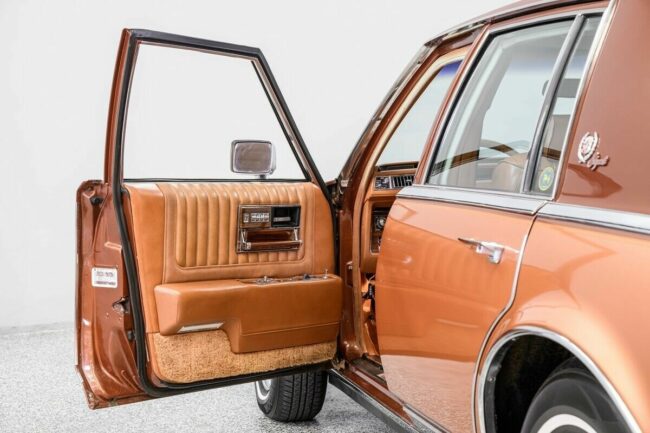
This one appears to be in very good condition. The listing has the expected lazy cut and paste from Wikipedia bull, plus it has the ‘rare’ AM/FM/8-track. Bwahaha.
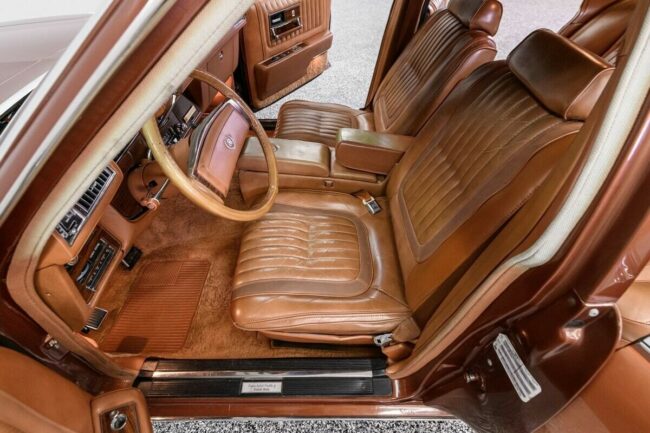

But it does look good, and this color combo doesn’t come up near as often. 30,200 original miles is claimed, though your author wonders why a repaint was necessary with such allegedly low miles.
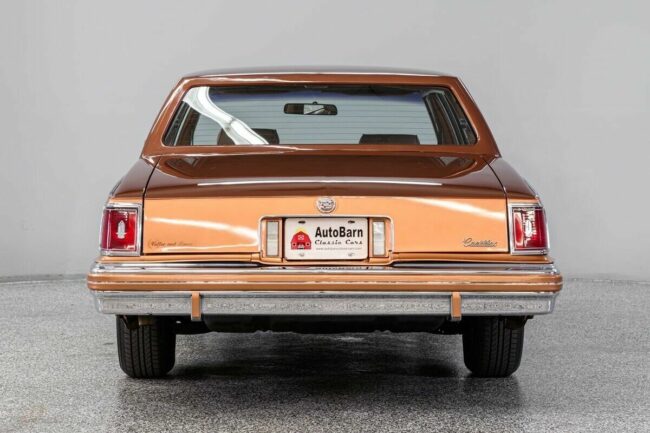
But I love it. I don’t need it, but scale model manufacturers, feel free to do one of these in 1/64 or 1/43 scale! I’d be a buyer. And this car’s trunk is more luxurious than many alleged ‘luxury’ 2021 models…
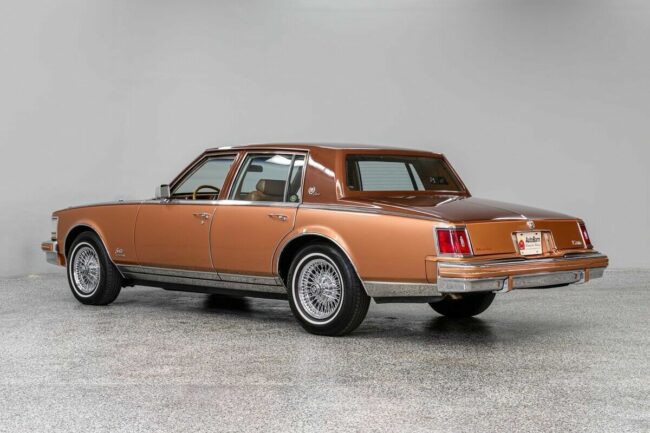
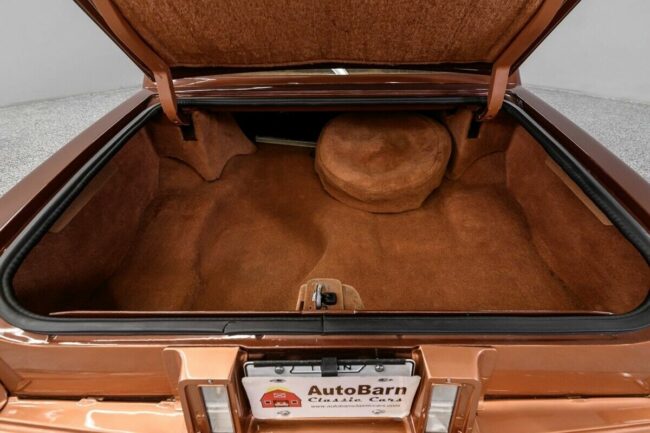
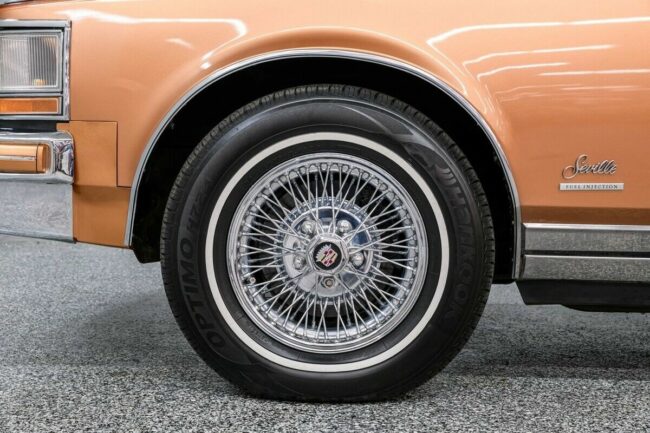
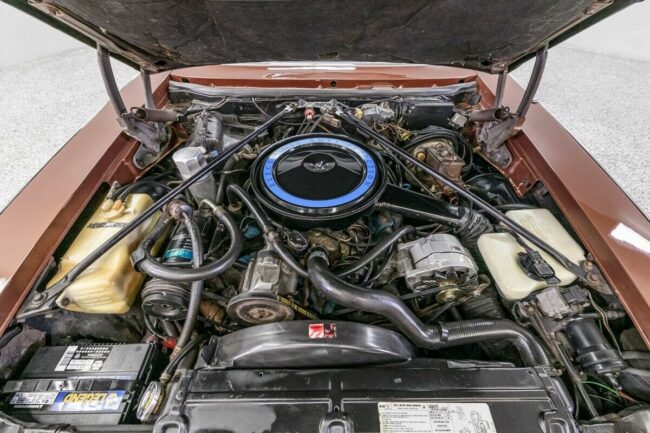
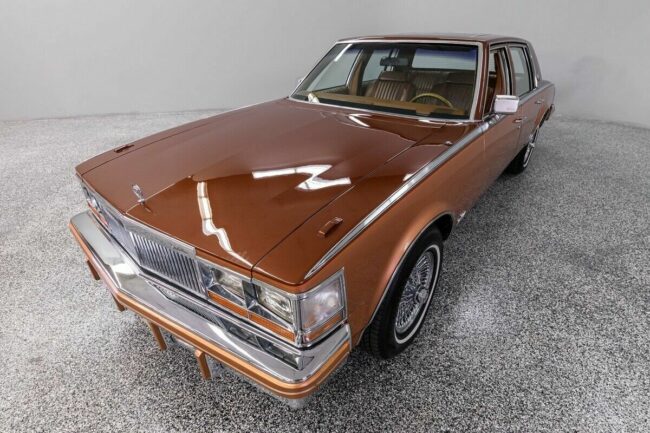







30 Comments
What are you waiting for Tom – here is your Lincoln replacement.
The body-colored trim on the bumpers makes the Lexus spindle grill look lovely.
CJ, this is a nice car and all, but I don’t think you should endow the trim with otherworldly powers.
Tom, nice but that car has been photoshopped more then any you have posted recently, that aside. It is a great color combination, as I never like the black/silver combination. One fact that a shopper for one of these needs to know.
The body side spears were installed by American Sunroof Corporation, the same company that does the Eldorado Biarritz’s from late 1976 though 1978. The spears were installed after the car was painted at Clark Avenue and then shipped to ASC. Therefore, the mounting holes have exposed steel and generally no rust protection and it is typical to see rust around the edges of the spears at the mounting peg location (Just something to look out for).
No the Elegante spears were fitted at Clark Street (front end) and Fleetwood (the rest of the body).
ASC had no part in ’78/’79 Elegantes.
Wish there was an edit feature, I ment to type “Eldorado Barritz’s from late 1976 thought 1978” above…. my bad….
Fixed it for you. 🙂
“I can go on, but I’ve waxed extensively on these cars before.”
Ewww. Gross.
I think I meant ‘waxed loquacious.’ Lunch was approaching when I wrote this…
With the international size, and the British heritage trim style, which Labour UK no longer had the confidence to put out there, I wonder if they considered export. We have seen the same time comparative half hearted attempts at turning American compacts into luxury cars in Spain with the Dodge Dart and Peter Monteverdi in Switzerland with the Volare’. I wonder how a more finished and professional job from Cadillac would have done?
I wonder why the Nova-turned-Seville was such a success, while the Granada-turned-Versailles was such a failure?
Full disclosure: I have driven a ’79 Coupe de Ville (very nice), an ’85 Fleetwood Brougham (almost as nice), and a ’77 Nova (meh), but have never driven a Seville, a Granada, or a Versailles.
This Seville was the world’s nicest Nova, which was a pretty good platform for the day, and Cadillac actually put some effort into making it into a real Cadillac with a standard fuel injected V-8, and a lot attention to suspension tuning, noise suppression, and interior quality. The Versailles was little more than a Granada with a Lincoln grill and trunk lid hump and the world’s first clear coat paint (woo-hoo), and the Granada itself was based on the 1960 Falcon platform so not exactly a paradigm of chassis refinement – in other words Ford phoned it in on the Versailles but stuck a very high buck price on it. Funny thing is, Cadillac copied the Versailles ineptitude with their phoned in Cimarron only a few years with similarly dismal results.
In addition to what Stingray said, there was also the issue that they sold the same package the year before at a much lower price as the Mercury Grand Monarch, right down to the rear discs but no not the grille or a two door.
Stingray?John, The Nova Seville narrative is a false one. The only non-Cadillac parts bin item on the Seville were the rear door hinges and the universal strikers. This Seville as a tarted up Nova is false. While I will not defend GM in later years for badge engineering, the Seville was a clean sheet of paper design. Yes the size is simular but as Jack pointed out a M-B 190 and and an M-B 600 look a lot a like but are completely different cars. At the time there were dedicated people at Cadillac and they knew they had to get the Seville right. The first 1,000 cars produced were identical (same options, same color, unfortunately Georgian Silver with matching interior) the line was run at 1/4 speed and there was multiple supervisors at each assembly station and any one could stop the line if they saw something was not right. I know it is hard to believe but Cadillac really did try to get the Seville right because they thought they had to, and because it was priced highter then a fully optioned Fleetwood Talisman and just under what one paid at the time for a Fleetwood Series 75 Sedan/Limo.
I know that Lynn. Understand that the import humpers really, really wanted to like the Seville but the lack of irs showed how unserious Cadillac was in inviting them to the party. Thus the import humpers waited until 1980 when the Seville got irs to flood the Cadillac dealer. It was a great time to abandon the Germans because their factories were now heavily staffed with guest workers, and were having a great deal of trouble trying to make federal and domestic cars side by side. That was how the German foray into luxury cars ended.
https://www.curbsideclassic.com/blog/cc-readers-ride-the-noville-coupe-and-who-still-thinks-the-seville-wasnt-just-a-tarted-up-nova/
Even when the Seville was new, there were people taking advantage of it being a lead-lined Nova to improve its handling through use of X-body and F-body sway bars and steering calibrations.
Looks like those late Studebaker pickups with the Dodge bed. Might as well weld it to an Aspen
JohnC, right…. and here we are almost a half century later and the best selling BMW’s are built for domestic and export in SOUTH CAROLINA, and the best selling M-B’s roll off the line in Title Town down in Sweet Home ALABAMA…. I aways laugh to my self when I hear colleagues in the office say they would never buy/lease an AMERICAN car and they are driving a BMW or M-B hatch back wagon built in the good old USA…. 🙂
I am no fan of trucks but it is interesting that when Explorers and Grand Cherokees emerged from the unmolested truck divisions of American companies and found an audience with American import buyers, the German response was interesting. Realizing they had no expertise (and no home market) for such a vehicle, they searched far and wide for a response. For Mercedes M Class, it was an unlikely joint venture between Mitsubishi and their American Freightliner truck division. For BMW it was turning the SAV project over to that paragon of German big butt design, TED talking Chris Bangel. The southern assembly points hinted at what the Germans thought the customers would be like. Just a good ole boy, never meaning no harm, as Waylon put it. They were correct, those sophisticated import humpers came running back to Hugo Boss man.
Anyone linking to Das Curbensiden GM Hatenscreed loses all credibility instantly. Past, present and future. Have a nice day.
There was a guy in C/D once who was putting 3.8T V6 Buick engines in BMW 3 series. Proving I guess that the BMW four and the Buick V6 were interchangeable. That does not mean BMW built the Grand National.
One word: small.
I always liked the Elegante package, the slick roof, 2 tone and wires really set the car off. 1978 also introduced another interesting option, the $950 Trip Computer option, the worlds first digital dash and trip computer combination. Developed through Delco Electronics, the trip computer used data from the fuel injection system to calculate distance to empty, instant and average mpg, engine temp, volts, average speed, arrival time and it displayed where the clock would be on the standard cars. It was combined with a digital speedometer and digital fuel gauge, pretty techy stuff for 1978.
Tom/Carmine/John C/JCinSD,
So much style, lots of ci’s, No Snow Plow Bumpers, just had to pass this along….
https://blog.consumerguide.com/0-60-challenge-the-personal-luxury-cars-of-1972/
And before anyone says anything about the times, remember in most cases you were hauling 3 tons (6,000 pounds) or more from a dead stop… 🙂
I love those well colored photos of the 72s, usually with the ideal owner displayed, well the GP guy looked a little shady. As far as the 0-60 times, I think that is a better measure on a sport car, but wish Consumer Guide numbers had been included on things like the automatic Fox, 2002, and Celica to keep the import humpers at bay.
For comparison, I have numbers from a MotorTrend 1975 Eldorado v Mark IV v Imperial v 450SEL v XJ6 v BMW 3.0i and with heavier bumper cars,
From fastest to slowest…..
BMW 3.0i with a manual.
0-60 10.9 16.98 through the quarter @ 83
Eldorado…..5290lb curb weight
0-60 10.9 17.60 through the quarter @78
450SEL….4100lb curb weight
0-60 11.1 17.55 through the quarter @79
Mark IV… 5430lb curb weight
0-60 11.2 17.56 through the quarter @80
Imperial…5185lb curb weight
0-60 12.7 17.77 through the quarter @79
XJ6 with broken a/c
0-60 12.9 18.41 through the quarter @76
It would be interesting to see the fuel consumptions experienced during the test. I suspect the Mercedes-Benz would not have had the sort of efficiency advantage one might expect from a thousand pounds less mass and fuel injection, although the BMW may have bettered the others by a few miles per gallon.
BMW 18.4 mpg
Mercedes 18.7 mpg
XJ6 15.3 mpg
Imperial 14.8 mpg
Eldorado 14.3 mpg
Mark IV 13.2 mpg
Not that bad for the injected cars and not as dismal for the enormous smogged big CID cars.
Interesting. I’ve seen some pretty bad numbers reported for the 4.5 liter Mercedes before.
I have the February, 1969 Car and Driver in front of me. They tested the 1969 Pontiac Grand Prix, which looked just like the one in your 1972 article. There were no big bumpers to explain a drop in performance. The 1969 Pontiac, which had a 455 with 370 gross horsepower and a final drive ratio of 3.23 paired with a 3-speed automatic, accelerated from 0-60 miles per hour in 6.9 seconds. They also tested a Grand Prix Royal Bobcat, which was tuned by a dealer called Royal Pontiac like every GTO Car and Driver ever presented as a production car. That one hit 60 miles per hour in 5.4 seconds with a 4-speed running through a 3.91 rear end.